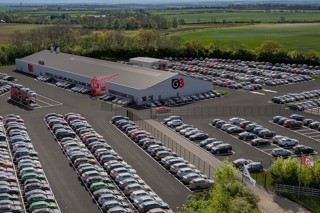Meteorologically speaking, summer may have been a wash out. But despite analysts’ early fears surrounding car sales projections, the motor industry has, generally, fared well.
When it comes to new registrations, demand has admittedly cooled as 2017 has unfolded, but a slight slowdown is perhaps to be expected following five consecutive years of explosive growth.
Dealers were also anxious about a used car sales glut, but revised figures from the Society of Motor Manufacturers and Traders revealed in August that – a minor 0.7% drop aside – the market had remained strong.
However, regardless of performance in recent months, retailers must now prepare their forecourts for what lies ahead.
And now is the crucial time to realign stock profiles for the changing season.
In summer, coupes and convertibles naturally convert well with healthy prices and quick turnarounds, whereas the residual values for such vehicles unsurprisingly becomes depressed as the colder weather hits and people turn their attentions to seemingly more practical vehicles such as 4x4s and SUVs.
Many drivers perceive that they need such a vehicle, even if they don’t!
Consequently, as demand rises, so too do the achievable sale prices.
This is even the case for two-wheel drive derivatives whose sale values are pulled up as they too fall into the SUV bracket.
For many dealers, this narrative is nothing new or surprising. And many will not stick to rigid selling patterns.
But it is worth paying attention to market conditions and trends.
So what does autumn really mean?
A number of retailers will choose to liquidate ‘summer’ stock as soon as possible to make way for the vehicles they know will sell better in the latter half of the year.
Conversely, others will sit tight on such cars until the New Year when brighter weather is once again on the horizon.
However, there will inevitably be a need to pull prices right in and reposition the stock to a far less prominent forecourt location.
In terms of spending, some consumers will admittedly have holiday splurges to pay off, but after the summer, financial attention generally now turns to buying cars.
There is therefore the potential for volumes to increase in late September/early October (half term aside) before the notoriously difficult November when things start to fall flat ahead of December.
There are of course some cannier consumers who – aware of the aforementioned market trends themselves – will capitalise on the opportunity to grab a forecourt bargain and get ahead of the price curve.
Savvier dealers may therefore concentrate on marketing to these engaged buyers – hit December well for example, and it is possible to experience some success.
It is perhaps this same type of savvy dealer that will look out for a bargain themselves at auction.
After all, autumn is a common time for the fleet market to part exchange its stock, which sees a plethora of attractive vehicles coming through this disposal route. Due to the state of the wider market, G3 is predicting its biggest December to date, for example.
Can anyone truly say how the upcoming seasons will unfold? Of course not.
And overall trends do not mean that every dealer’s performance will be the same.
On the contrary, retailers who remain agile and adapt their forecourts to reflect buyer demand and of-the-moment purchasing patterns, are those that will still thrive, despite any wider economic difficulties.
The demand is there, if you know how to satisfy it.
Author: Alex Miles (pictured), buyer services manager, G3 Remarketing



















Login to comment
Comments
No comments have been made yet.